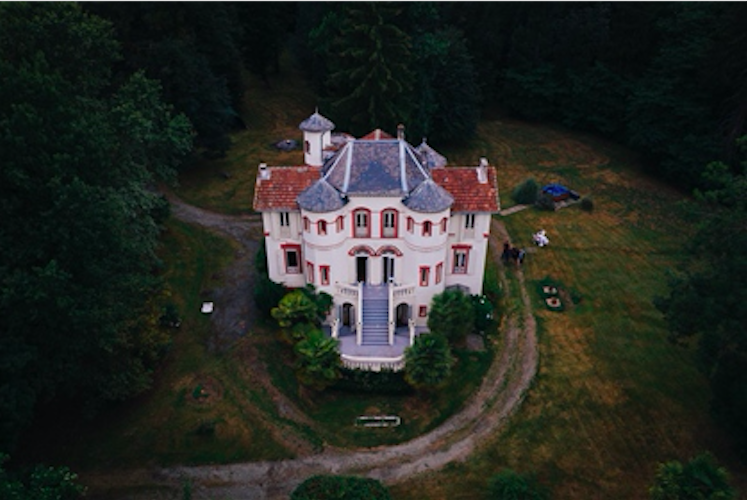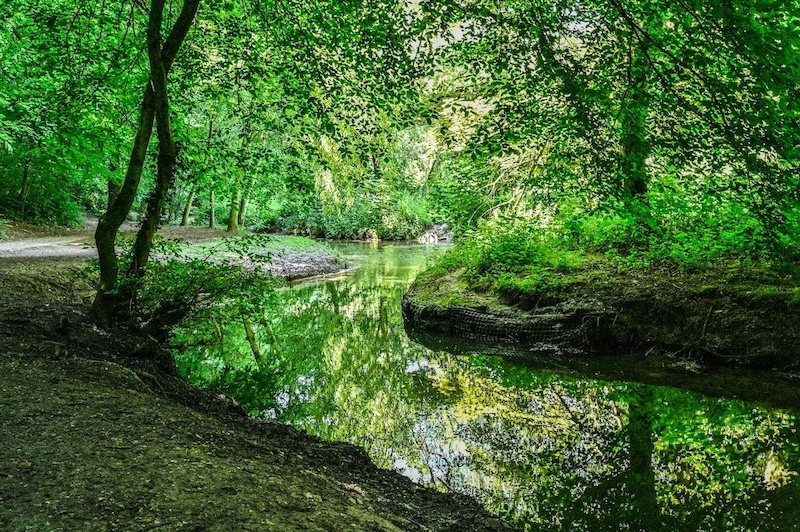The Rumi Trail is a long-distance pilgrimage trail honouring the ancient Khorasan traditions which travelled with Mevlana Rumi. It starts in the heart of central Asia and follows the Silk Road, ancient pilgrimage and caravan routes to Mecca and Jerusalem as far as the city of Konya in Turkey. The Rumi Trail is suitable for both cyclists and hikers.
1. Mevlānā Jalal ad-Din Muhammed Rumi
The underlying philosophy of the Rumi Trail is that of Mevlānā Jalal ad-Din Muhammed Rumi, a thirteenth-century philosopher and poet of Islam, whose wisdom transcended national boundaries, seeking inclusion and peace for all (Mirdal, 2012). In the early thirteenth century, the brutal Mongol conquest of Central Asia led to major disruptions, with many people fleeing west including the young man known to the world now simply as Rumi. Rumi and his whole family as well as a group of their clan disciples left their home in Balgh in Persia to travel to Baghdad, Mecca and then via Jordan and Syria to arrive in Konya in what is now Anatolia in central Turkey.
Already acknowledged as a great talent as a boy, Rumi became a well-known scholar, and later the Sufi he is known as today, through two of his masterpieces, the Mathnawi (a poem written by Rumi) and the Ghazaliyat-e Shams-e Tabrizi (Poems written by Shams-e Tabrizi), his philosophy in the form of lyric love poetry. Rumi is described in an UNESCO publication (2007) as an eminent philosopher and mystical poet of Islam who advocated tolerance, reason and access to knowledge through love, and is also described by the organization as one of the greatest comprehensive thinkers and scholars of Islamic civilization and culture.

2. A pilgrimage trail
The history of the new pilgrimage trail is part of the discussion, as we explore the traditions, languages and cultural heritage of the peoples along the way. Modern-day pilgrims can walk or cycle and are issued with a Rumi Trail travel passport (credential), receiving stamps from locals recording their progress. At the end they will be issued with the Parendelik Certificate in Konya while a special Uzbek certificate will be issued in Termez after completing the Uzbek section of the trail. Traces of past civilizations are evident along the route such as Timurid and Khorezm, Afghan, Persian, Arab, Roman, Byzantine and Ottoman heritage. Some villagers are still familiar with the concept of pilgrimage, and they treat travellers with reverence as harbingers of good fortune. Following the footsteps of Rumi in Uzbekistan, Afghanistan, Iran, Iraq, Kuwait, Saudi Arabia, Jordan, Palestina, Israel, Syria, Turkey, future connections may also include Tajikistan and Turkmenistan as well.

3. Slow, green travel and community based tourism
The hiking and cycling trail has a deeper meaning for travellers to experience. Starting in Nukus, the old land of Khorasan Saints, these oases hold the stories we love to hear, the people we love to meet and the land we love to see. Rumi’s work, poems and life has travelled the globe, beyond time and space and has touched countless hearts. To be able to go there by means of slow travel is the goal we set for developing the cycle route. The route goes from Nukus through the three UNESCO world heritage cities: Khiva, Bukhara, Samarkand via Shahrisabz to Termez at the Uzbekistan-Afghanistan border, approximately1,500 km.
The Rumi Trail is designed as green, inclusive and resilient tourism to bring green industry and activities to the region with little to no carbon footprint. For local people the Rumi trail will include community based tourism projects such as homestays, small bike rentals, home made dishes for cyclists and hikers etc. The goal is to get as many enthusiastic eco-tourists to enjoy these hiking and cycling trails, and the cycling theme following Rumi’s way gives more depth of the land and cultural heritage. This simple way of traveling makes you receptive to the knowledge and wisdom that comes your way. The inspiration for the Rumi Trail is credited to Mohammed El-Fers, who wrote a mini-biography of Mevlana Rumi and his journey in 1978 retraced the route of Mevlana Rumi. The Rumi Trail map is also his design.

4. The route that tells a story
During the development of the Rumi cycling trail pictures and videos were made and importantly stories were collected from people. Every human is like a source or library, we often say. The collection of information in one single human is like a treasure map. Cycling this route gives you time to find and record these old stories. There are countless examples of how one person, picture, book and film can be life changing. We however keep it simple and just cycle, record our findings, making the maps for cyclists so many people can enjoy these mystical adventures in the land of 1001 nights and the stories we love so much. Together with a group of mapmakers we use OpenStreetMap to record our detailed findings and enhance the maps. As it’s open source it is a powerful tool to immediately map your cycle and hiking routes. In the guidebooks we use these maps with all their valuable information for hikers and cyclists, mostly only available after they are added to the map.

5. Hopes for the new route
The Rumi Trail cycling route aims to develop a sustainable cycling route enhancing the connection between the major UNESCO silk road cities and the little villages, including a small cabin in the desert, as one united trail with many environmentally friendly aspects. Long distance hiking and cycling trails spread the economic improvement of all connected to the trail rather than the concentration of one city or object. It improves community based tourism and creates resilient communities with better future prospects.












